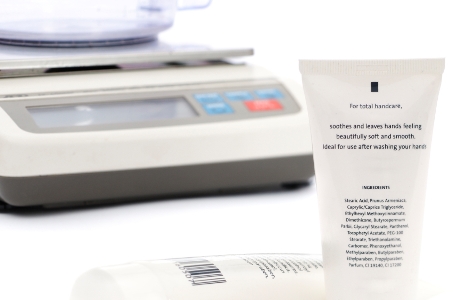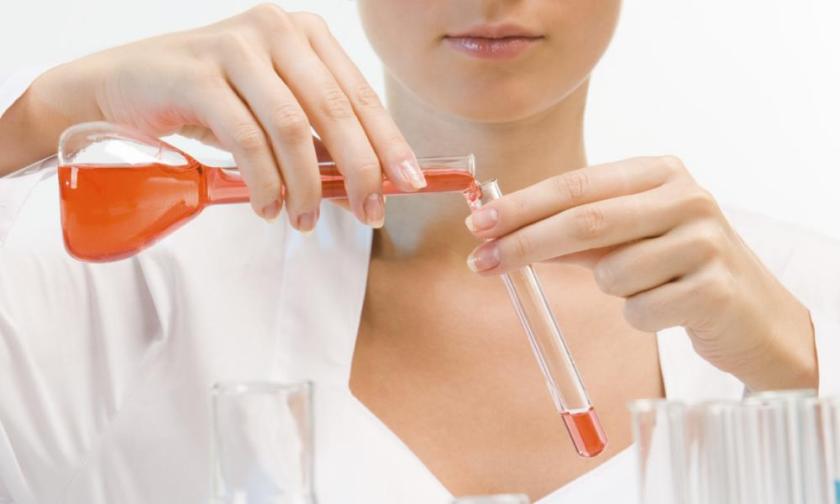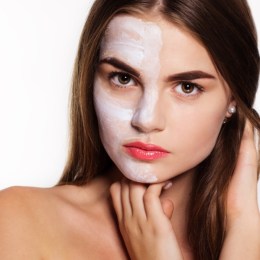When it comes to chemical composition, what should we really be asking from our skincare? Writes Michelle Reeve.
If I invited you to apply the following chemical cocktail to your skin, would you? Even if you were prepared to wear it, would you be brave enough to eat it?
WATER (75%); SUGARS (12%) GLUCOSE (48%), FRUCTOSE (40%), SUCROSE (2%), MALTOSE (<1%), STARCH (5%), FIBRE (3%), (E460, E461, E452, E464, E456, E467); AMINO ACIDS (GLUTAMIC ACID (19%), ASPARTIC ACID (15%), HISTONE (11%), LEUCINE (7%), LYSINE (5%), PHENALALANINE (4%), ARGININE (4%), VALINE (4%), ALANINE (4%), SERINE (4%), GLYCINE (3%), THREONINE (3%), ISOLEUCINE (3%), PROLINE (3%), TRYPTOPHAN (1%), CYSTINE (1%), TYROSINE (1%), METHONINE (1%); FATTY ACIDS (1%) (PALMITIC ACID (30%), OMEGA-3 FATTY ACID, LINOLEIC ACID (14%), PALMITOLEIC ACID (3%), STEARIC ACID (2%), LAURIC ACID (1%), MYRISTIC ACID (1%), CAPRIC ACID (<1%), ASH (<1%), PHYTOSTEROLS, COLALIC ACID, E300, E306 (TOCOPHEROL), PHYLLOQUINONE, THIAMIN; COLOURS (YELLOW-ORANGE E101) (RIBOFLAVIN) (YELLOW-BROWN e160a); FLAVOURS (ETHYL HEXANOATE, ETHYL BUTONOATE, 3-METHYLBUT-1-YLETHANNOATE, PENTYL ACETATE), E1510, ETHENE GAS.
Sure, I would! Why not?
After all it’s not that sinister, just the chemical composition of an everyday banana.
That’s right chemicals; the inescapable building blocks of the world around us. And yet it appears that the unassuming periodic table is being used as leverage in cosmetic warfare. The binary skincare choices that industry present are irrational. Chemical v Natural, Active v Botanical, Cosmeceutical v Aromatherapy. The oxymoronic nature of these either-or options never ceases to amuse me.
The aesthetics industry is approaching a crossroads where consumers are being asked to choose exclusively between ‘remedial’ cosmeceutical ranges or ‘natural’ organic alternatives.
Neither of these markets will deliver results unless the right combination of the right ingredients is delivered in the right concentration.
My passion in creating formulations is to embrace how the individual chemical constituents of complex botanical ingredients interact with the skin at a cellular level.
After all, who wants natural if it is ineffective?
I meticulously formulate to meet three core criteria. Firstly, match the most effective botanical ingredients to maximize product efficacy. Secondly, use these ingredients in concentrations rich enough to maximise results. And lastly, assure product integrity by sourcing the purest or biodynamic form of the ingredient, thus ensuring minimal exposure to processing to retain maximum nutrition.
The way industry have started grouping skincare brands is misleading consumers.
What’s the point of choosing a certified organic product if 90 percent of the formulation is water and the remaining ingredients have no remedial function? Or finding a cosmeceutical product where the only outcome is aggressive exfoliation, devoid of the skin-replenishing essential fatty acids and biochemically active nutrients necessary to protect skin and prevent ageing?
So what is it that we should we be asking from our skincare? As a beginning, I think it’s this;
What is the percentage of active ingredients in our cosmetics?
We should be able to recognise biochemically available nutrients listed from the beginning of the label. A formulation based on mineral oil or petrochemicals, apart from potentially harming skin, is a complete waste of money.
At best, these oils are lazy. Lacking nutrition, they are the opportunity cost of using ingredient that delivers transdermal benefits to the skin.
Mineral oils have the added drawback of congesting and irritating the skin. I’m stunned at the number of expensive skincare brands which continue to elect mineral oil as a base ingredient.
 Does the product use synthetic ingredients and fillers?
Does the product use synthetic ingredients and fillers?
For an ingredient to be effective it needs to assert three crucial characteristics.
Firstly, to impact new cell growth an ingredient needs to be small enough to penetrate the layer where new cells are formed. It also need to be biochemically compatible; that is, made from plant based compounds that our bodies have evolved to recognise, accept and metabolise, while safely eliminating metabolites. And finally, be dense in available nutrients including antioxidants, phytochemicals, vitamins, carotenes, minerals, enzymes, amino acids and a range of essential fatty acids, all critical elements for hydration, collagen synthesis, reducing inflammation, fighting the effects of photo damage and cellular regeneration and repair.
Even patented synthetic compounds touted by cosmetic companies as ground-breaking ingredients look like a basic child’s drawing compared to the intricate complexity of the chemical compounds naturally found in plants. Alas, it’s not possible to patent a compound and inflate its price if nature has already slaved over the hard work.
What is the order of active ingredients on the label listing?
Like food ingredients, cosmetics are required to be listed from largest to smallest in volume on the label. With mainstream commercial formulations the preservative is generally around 3-5 percent. If key nutrients are listed after the preservative, what benefit is there for your skin in these much smaller quantities? I generally find there is more colour and fragrance in supermarket cosmetics than beneficial ingredients. Read the label and take the time to understand the contents.
How active are the actives?
The claim of natural or organic does not always justify the outcomes or benefits of a formulation. Ingredients need to be selected for their remedial action and used in concentrations rich enough to deliver results. Formulations need to be targeted instead of green washed with a hue of token botanicals.
There needs to be congruency between the product’s claim and the effectiveness of the ingredients used in the formulation. Cosmetic chemistry needs to be part of ongoing professional development in all salons and spas as the industry develops.
 Is the product oil free?
Is the product oil free?
Yikes, I certainly hope not! Our skin is made up of a waterproof layer and protected by the skins pH (an acidic layer of sebaceous oils). At a cellular level, each cell wall is composed of a phospholipid bilayer (fats, oils, lipids).
If our skin and cells are oil loving and need oil to metabolise, repair, rejuvenate and renew then why do consumers seek out products that are water based?
Generally because the mineral oils that have been traditionally used in all areas of skincare are congesting, tacky and comedogenic. The essential fatty acids healthy skin demands needs to be unrefined, biochemically compatible and structurally small enough to be transdermal. Without them skin is prone to inflammation, sensitivity and premature ageing. Plant oils penetrate effortlessly leaving skin hydrated and feeling supple.
Cold-pressed plant oils are not only nutrient rich sources for our skin, they also provide a lipid delivery system for water soluble actives, vitamins and therapeutic essential oils.
The industry is still finding its way. We need to use clearer messages in advertising and provide a forum for consumers to engage with cosmetic companies to understand their values, philosophy and focus. We need to be smart about our skincare choices and make education an ongoing commitment for our therapists.
 In the meantime, everything is a chemical. The question we need to be asking is who is creating them.
In the meantime, everything is a chemical. The question we need to be asking is who is creating them.
My money is still on my favourite biochemist: Ms Mother Nature.
Michelle Reeve is Founder and Managing Director of Waterlily Australasia




